Introduction
In the world of construction and event management, the importance of reliable lifting solutions cannot be overstated. Rental winches, with their diverse types and capabilities, play a crucial role in enhancing operational efficiency and ensuring safety on the job. From electric winches, favored for their precision, to robust hydraulic models designed for heavy lifting, each type serves distinct applications tailored to specific needs.
As industries evolve, the choice between renting and buying winches becomes a pivotal decision, influenced by factors such as project duration, budget, and frequency of use. Understanding the nuances of winch selection and rental services empowers businesses to make informed choices that align with their operational demands. This article delves into the various types of rental winches, their applications, and key considerations for selecting the right equipment to ensure success in any project.
Exploring Different Types of Rental Winches
Rental devices are available in several types, each catering to distinct applications. Electric hoists have gained popularity due to their consistent power and efficiency, making them ideal for construction sites where heavy lifting is frequent. These devices are particularly advantageous for tasks requiring precision and reliability. Recent statistics indicate that electric hoists hold a 60% market share in 2024, reflecting their growing adoption in the construction industry.
Hydraulic devices, on the other hand, offer increased power and are often preferred in industrial settings, capable of handling heavier loads with ease. Their robust performance makes them suitable for tasks demanding significant lifting capacity and durability. In contrast, hydraulic devices account for approximately 30% of the market share, highlighting their specialized use in more demanding applications.
Manual hoists, while less powerful, are highly valued for their mobility and ease of use. They are perfect for smaller tasks or situations where portability is crucial. Despite their simplicity, manual hoists can be effective in various scenarios, especially where power sources are limited. This category represents about 10% of the market share, primarily utilized for light-duty tasks.
Recent advancements in rental lifting technology, such as the , have revolutionized subsea applications. These hoisting devices, designed for offshore and platform lifting, adhere to stringent DNVGL regulations, ensuring safety and reliability. Kelly Burch, a freelance writer, emphasizes the importance of consulting with an expert when choosing a hoisting device to ensure safe operation and compliance with applicable regulations. Recent news emphasizes that electric hydraulic manual devices are gaining traction due to their versatility and efficiency, further influencing market trends.
Understanding the specific advantages and applications of each type of winch allows businesses and individuals to make informed decisions tailored to their unique requirements. This approach not only enhances operational efficiency but also ensures that the selected equipment meets the necessary safety standards for any given task.
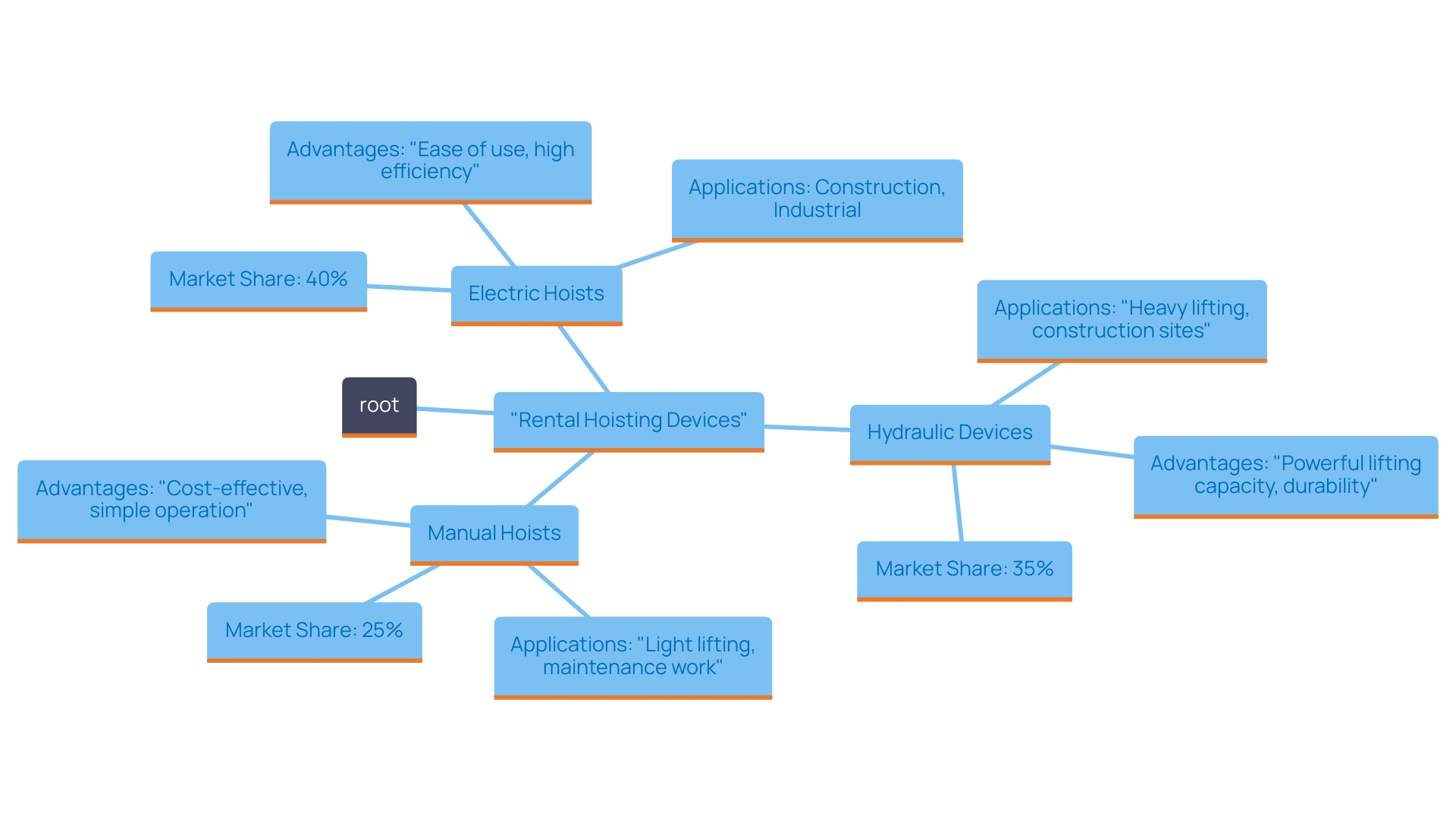
The Importance of Winches in Industry and Event Management
Winches serve as in both industrial and event management settings. In construction, their main role is to lift and move heavy materials, ensuring that tasks progress efficiently and safely. By choosing hoists with appropriate load capacities, high-quality materials, and reliable gear mechanisms, construction managers can mitigate risks and maintain project timelines. According to industry statistics, using the appropriate device can boost productivity by up to 30%, highlighting their importance on job sites.
In the realm of event management, hoists are equally critical. They facilitate the setup of large-scale structures, stages, and intricate lighting systems, playing a vital role in the seamless coordination of logistics. The dependability of hoists ensures that events run smoothly, with all necessary equipment securely in place. Research indicates that event arrangements employing hoists can decrease assembly time by 40%, highlighting their significance in logistics for events.
A recent case study highlights the significance of making informed choices when buying hoists. Factors such as the intended use environment, durability, and budget must be carefully considered to ensure long-term reliability and value. For instance, choosing a device that meets the specific demands of an event setup or construction site can significantly enhance operational efficiency.
By comprehending the essential function of hoists in these sectors, stakeholders can efficiently plan and implement their initiatives. Ensuring the availability and readiness of the right tools translates to smoother operations, whether lifting heavy construction materials or setting up elaborate event stages. The connection between dependable hoist usage and successful project outcomes cannot be overstated; thus, investing in the right equipment is paramount.
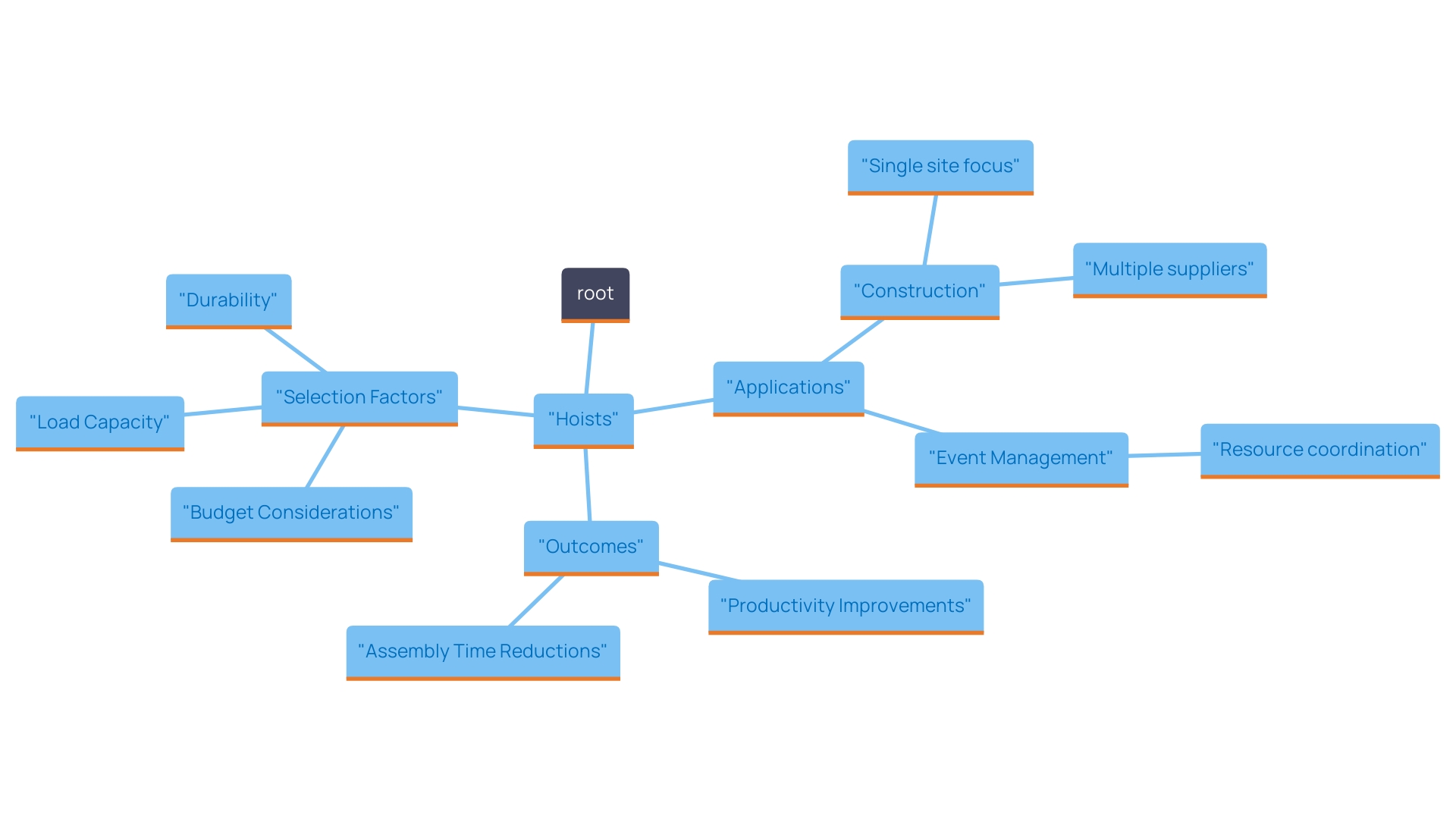
Choosing the Right Rental Service for Your Winch Needs
Choosing the appropriate leasing service for hoists requires a thorough assessment of multiple essential elements. Firstly, pricing is a significant consideration. Recent reviews indicate that transparent and competitive pricing strategies can greatly influence customer satisfaction. For instance, Clifford Power emphasizes the importance of providing clear and upfront pricing, noting that 'transparent pricing and availability are key to building trust with our clients.' In 2024, average leasing rates for winches vary, with typical prices ranging from $150 to $300 per day depending on the type and capacity, underscoring the need to compare options effectively.
Availability is another critical factor, particularly for tasks with tight deadlines. Ensuring that the leasing service can meet your timeline is essential. Clifford Power's case study in Houston, TX, where they rented a 1,250 kVA generator to Lone Star College, underscores the importance of prompt service in meeting requirements. This promptness is equally vital when handling winch leases, where delays can impact overall project timelines.
Service quality, including customer support and device upkeep, can significantly influence your leasing experience. Komatsu West's remarkable growth from $5M to $60M in sales serves as a testament to the value of using platforms like Record360 for efficient documentation and enhanced service quality. This reflects the importance of partnering with a reliable provider to ensure well-maintained and dependable equipment.
When evaluating hoist leasing services, consider and recent feedback. For instance, TCI Leasing has enhanced documentation efficiency and expense recovery across its locations, demonstrating how utilizing effective management tools can improve service quality and customer satisfaction specifically in the context of equipment leasing.
In summary, by concentrating on pricing, availability, and service quality, and by utilizing insights from industry professionals and case studies, you can make a well-informed choice when selecting a rental service that aligns with your requirements and budget limitations.
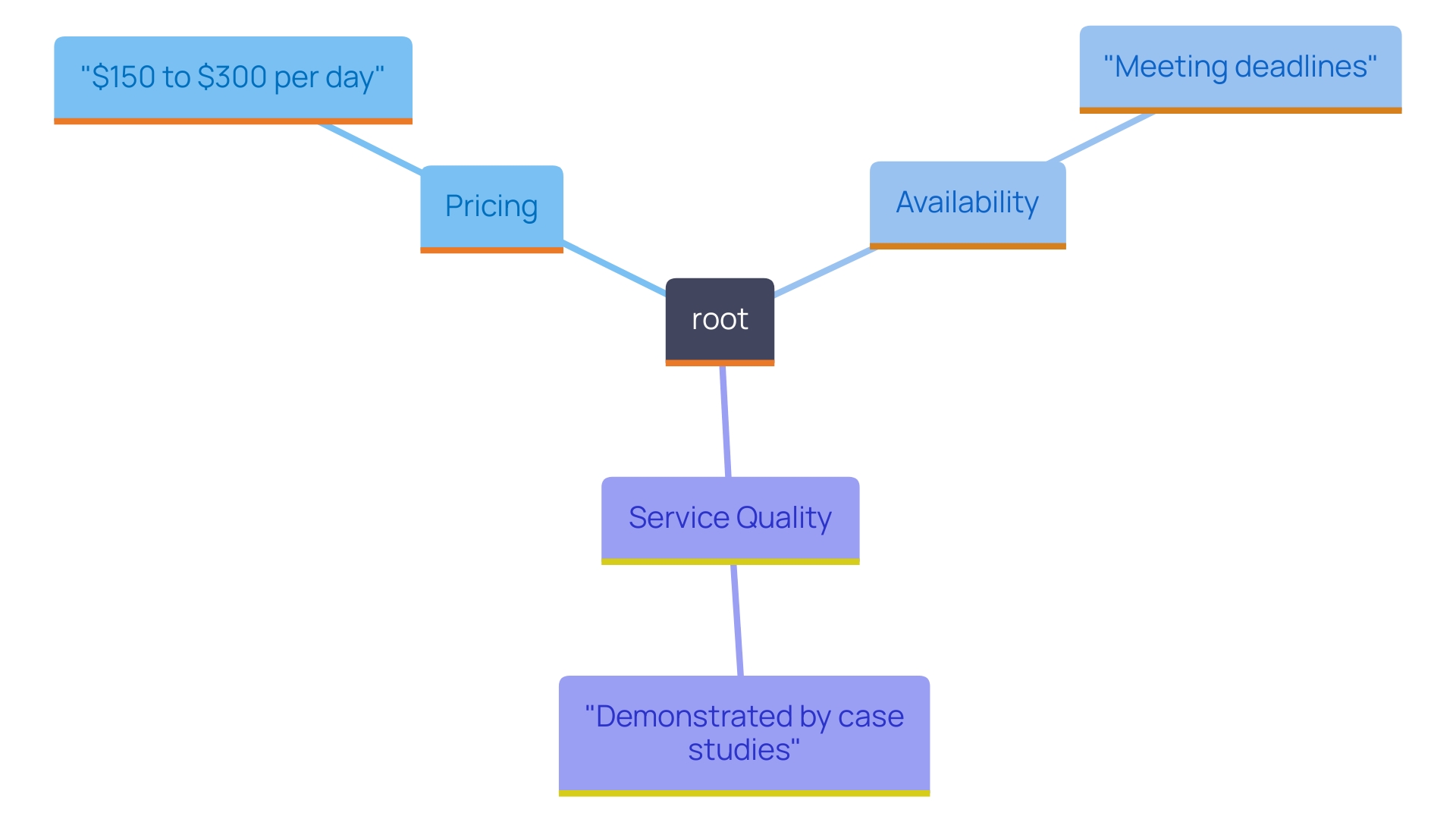
Renting vs. Buying: Evaluating Your Winch Options
When determining whether to rent or purchase a hoist, several essential factors must be taken into account, including the frequency of use, budget limitations, and duration of the task. Leasing hoists frequently appears as an economical option for occasional tasks or rare usage. This approach eliminates the need for significant upfront investments and ongoing maintenance costs. For example, leasing a hoist for a temporary task can greatly lower total costs in contrast to buying, particularly when the apparatus will not be frequently utilized. According to industry reports, renting can save companies up to 30% on costs for short-term projects.
On the other hand, for businesses with consistent heavy lifting needs, purchasing a winch might be more economical in the long run. Ownership allows companies to reduce long-term operational expenses, as the cost-per-use decreases with frequent use. An industry specialist notes, 'Understanding your machinery requirements and market conditions can greatly influence your decision between renting and buying.' This insight is crucial for equipment leasing, where comprehending local market trends can directly affect decision-making.
Conducting a detailed cost analysis can provide valuable insights. For example, a financial analysis comparing the lifetime cost of ownership against rental fees over a specific period can illustrate potential savings or expenditures. Reports indicate that businesses involved in more than 5 initiatives a year typically gain advantages from ownership. Additionally, assessing the number of projects and expected usage frequency can guide stakeholders in making the most financially sound decision, ultimately optimizing their resources and operational efficiency.
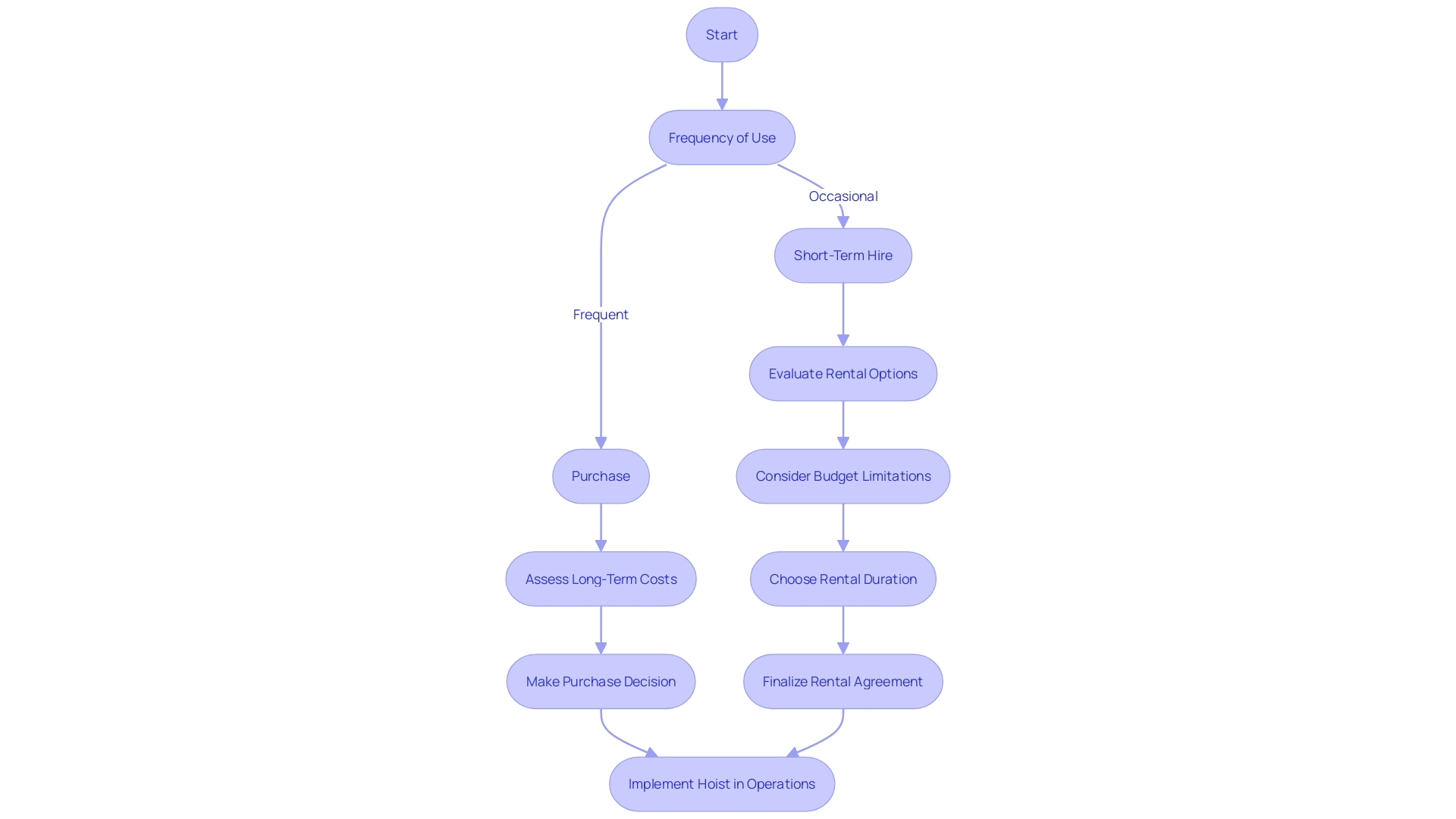
Safety Considerations When Using Rental Winches
When utilizing rental devices, adherence to safety protocols is essential. Operators should be trained and familiar with the machinery to avoid accidents. Routine checks of the hoisting device and surrounding area are essential to guarantee safe working conditions. Furthermore, utilizing the suitable hoist for the specific load and task, along with wearing necessary personal protective equipment (PPE), contributes to overall safety. By prioritizing these , users can significantly reduce risks while maximizing the effectiveness of their rental winches.
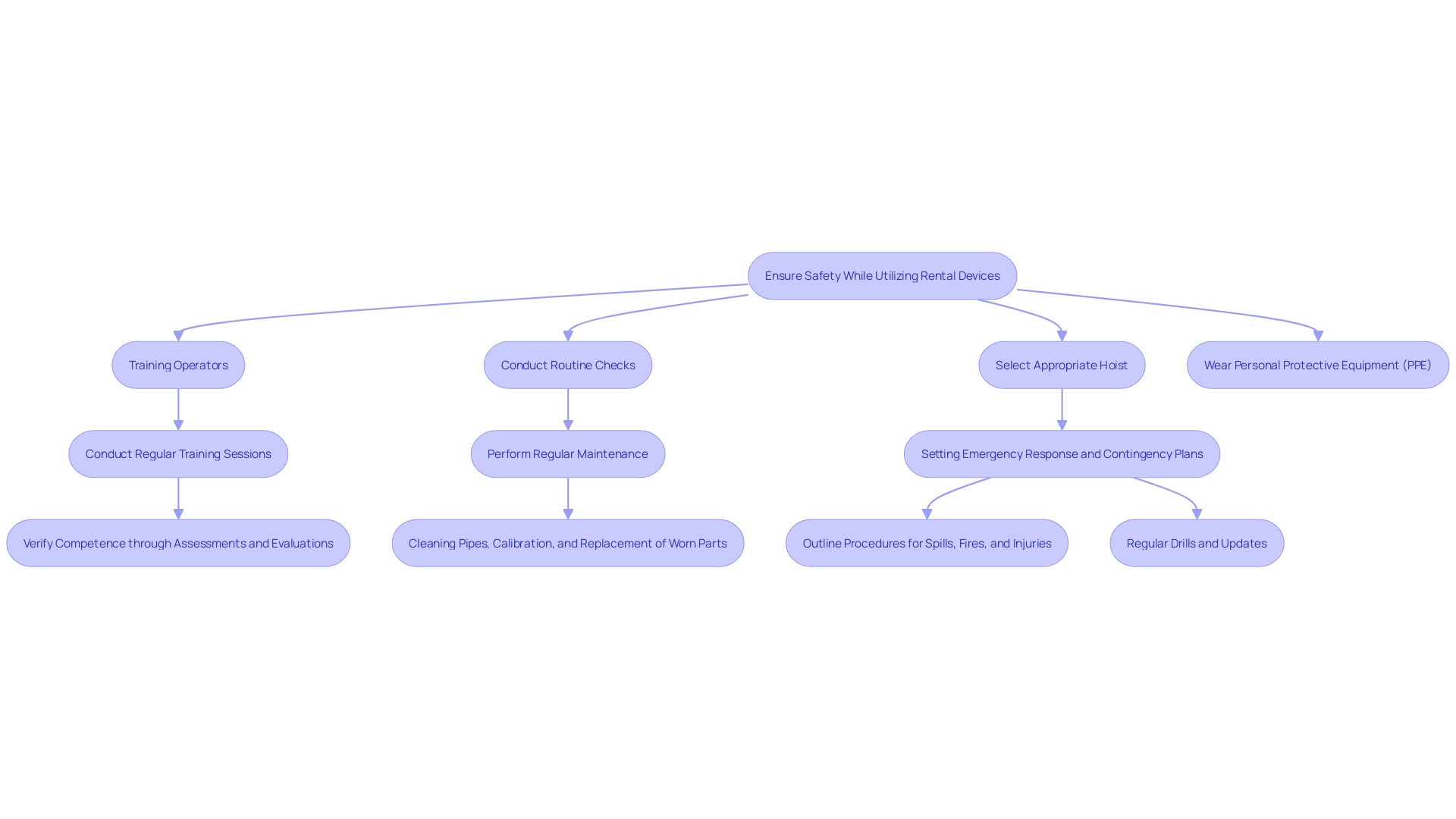
Conclusion
Understanding the diverse types of rental winches and their specific applications is vital for any business involved in construction or event management. Electric winches are favored for their efficiency and precision, while hydraulic models excel in heavy lifting tasks. Manual winches, although less powerful, offer excellent portability for lighter duties.
Recognizing the advantages of each type enables stakeholders to select the most appropriate equipment, which can lead to significant improvements in operational efficiency and safety.
In both industrial and event contexts, the role of winches cannot be underestimated. They facilitate the smooth execution of projects by ensuring that heavy materials are lifted and moved safely. The right winch can enhance productivity and streamline logistics, ultimately contributing to successful project outcomes.
As such, informed decision-making when selecting winches or rental services is crucial. Factors such as pricing, availability, and service quality should be carefully evaluated to ensure that the chosen equipment aligns with project needs and budget constraints.
Furthermore, the choice between renting and buying winches hinges on usage frequency and project duration. Renting can be a cost-effective option for short-term needs, whereas purchasing may be advantageous for businesses with ongoing heavy lifting requirements. Conducting a thorough cost analysis is essential to determine the most financially sound approach.
Ultimately, prioritizing safety and compliance with operational protocols is paramount when utilizing rental winches. By adhering to best practices, businesses can mitigate risks and ensure that their projects run smoothly. Making informed decisions about winch types, rental services, and safety measures will pave the way for operational success in any construction or event management endeavor.
Frequently Asked Questions
What types of rental hoisting devices are available and what are their applications?
Rental hoisting devices include electric hoists, hydraulic devices, and manual hoists. Electric hoists are popular for construction sites due to their power and efficiency, holding a 60% market share. Hydraulic devices are preferred in industrial settings for heavier loads, accounting for about 30% of the market. Manual hoists are valued for their mobility and ease of use, representing around 10% of the market, mainly for light-duty tasks.
What are the advantages of electric hoists in the construction industry?
Electric hoists provide consistent power and efficiency, making them ideal for frequent heavy lifting. They are particularly advantageous for tasks requiring precision and reliability.
How do hydraulic devices differ from electric hoists?
Hydraulic devices offer increased power and are suitable for industrial settings, capable of handling heavier loads with durability. They are preferred for tasks that demand significant lifting capacity, while electric hoists are more common in construction.
What are the key benefits of manual hoists?
Manual hoists are highly portable and easy to use, making them ideal for smaller tasks and situations with limited power sources. They are effective for light-duty tasks despite having less lifting power than electric or hydraulic devices.
What recent advancements have been made in rental lifting technology?
Recent advancements include the development of Palfinger AHC devices, which are designed for subsea applications and adhere to strict safety regulations, enhancing reliability for offshore lifting tasks.
Why is it important to consult an expert when choosing a hoisting device?
Consulting an expert ensures safe operation and compliance with applicable regulations, helping users select the right equipment tailored to their specific needs.
How do hoists impact productivity in construction and event management?
Using appropriate hoists can boost productivity by up to 30% in construction and decrease assembly time by 40% in event management, highlighting their importance in efficiently managing logistics.
What factors should be considered when choosing a leasing service for hoists?
Key factors include pricing, availability, service quality, and customer support. Transparent pricing and reliable service significantly influence customer satisfaction and project timelines.
What are the cost implications of renting versus purchasing a hoist?
Renting is typically more economical for occasional tasks, saving companies up to 30% on costs for short-term projects. However, purchasing may be more cost-effective for businesses with consistent heavy lifting needs, as ownership reduces long-term operational expenses.
What safety protocols should be followed when using rental hoisting devices?
Operators must be trained, conduct routine checks of the equipment and surroundings, use the appropriate hoist for the task, and wear necessary personal protective equipment (PPE) to ensure safety and reduce risks.




